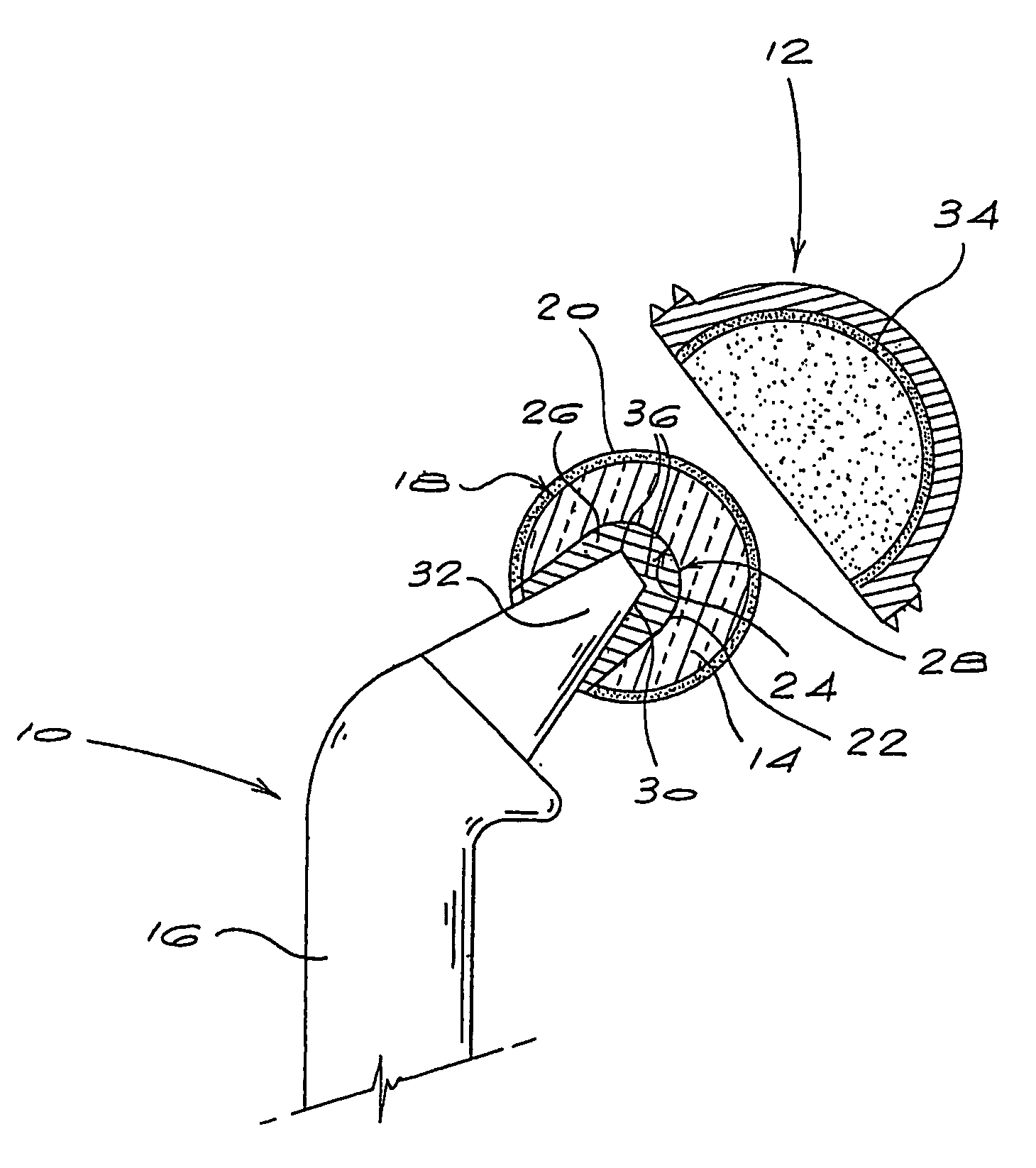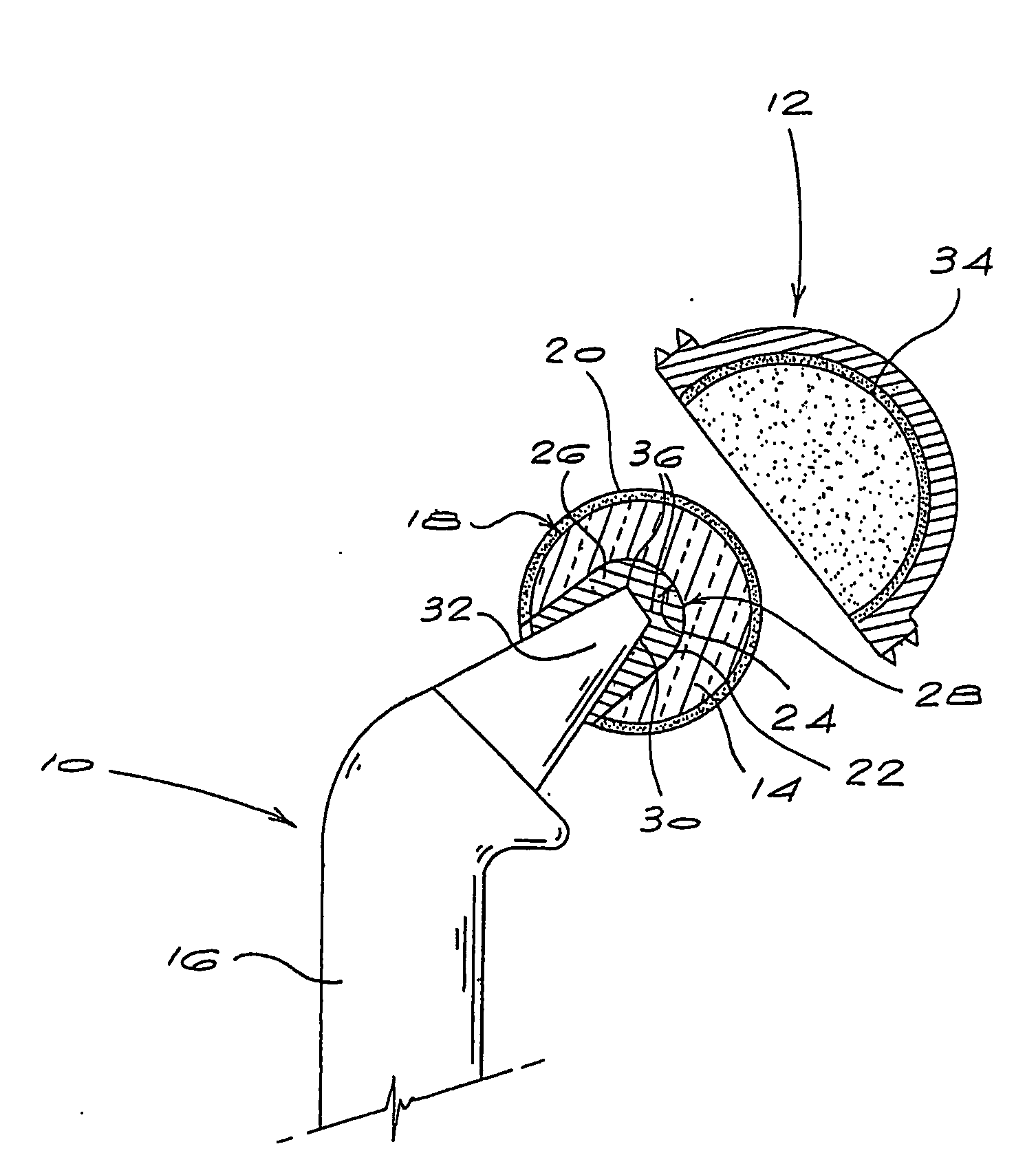Prosthetic joint
a prosthetic joint and joint technology, applied in the field of orthopaedic implants, can solve the problems of limited life span of prosthetic joints, joint loosening, and joint failure, and achieve the effects of reducing the life of prosthetic joints
- Summary
- Abstract
- Description
- Claims
- Application Information
AI Technical Summary
Benefits of technology
Problems solved by technology
Method used
Image
Examples
Embodiment Construction
[0027] Referring to the accompanying drawing, a prosthetic joint ball component 10 of the invention is receivable in a prosthetic joint socket component 12 to form a prosthetic joint. The ball component 10 comprises a generally spherical ball 14 mounted on a stem 16. The outer rounded surface 18 of the ball 14, in this case, is provided with a layer 20 of CVD diamond, prepared by mechanical polishing to present a surface with an RA of 20 nm or less. The ball 14 is formed of a silicon carbide or similar substrate and includes a recess 22 having a rounded surface 24. Mounted in the recess 22 is a metal insert 26 formed of a cobalt-chromium alloy or titanium alloy, and having a rounded outer surface 28 complementary to the surface 24 of the recess 22. The metal insert 26 includes a socket 30 which is shaped and sized to receive, in use, the tapered end 32 of the stem 16.
[0028] The metal insert 26 is bonded in the recess 22 by brazing using, for example, TiCuAg, or diffusion bonding us...
PUM
| Property | Measurement | Unit |
|---|---|---|
| thick | aaaaa | aaaaa |
| RA | aaaaa | aaaaa |
| thick | aaaaa | aaaaa |
Abstract
Description
Claims
Application Information
 Login to View More
Login to View More - R&D
- Intellectual Property
- Life Sciences
- Materials
- Tech Scout
- Unparalleled Data Quality
- Higher Quality Content
- 60% Fewer Hallucinations
Browse by: Latest US Patents, China's latest patents, Technical Efficacy Thesaurus, Application Domain, Technology Topic, Popular Technical Reports.
© 2025 PatSnap. All rights reserved.Legal|Privacy policy|Modern Slavery Act Transparency Statement|Sitemap|About US| Contact US: help@patsnap.com


